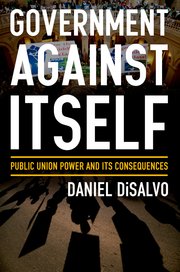Public Union Power: A Conversation with Daniel DiSalvo
FDR observed that “The process of collective bargaining . . . cannot be transplanted into the public service.” What does it mean for taxpayers if government workers organize into unions and engage in collective bargaining arrangements? What actually checks and balances their desires for greater pay and benefits? Politicians? Engaged citizens? Will dutiful public servants voluntarily restrain their appetites for the public good? To ask these questions is to answer them with a wry smile.
This episode of Liberty Law Talk with Professor Daniel DiSalvo on his new book, Government Against Itself, focuses on the dramatic growth of public sector unions in America. Legislatively created by states in the 1960s and 1970s, the rise of these unions has occurred without much public comment or notice. That changed with the 2008 financial crisis that exposed the fiscal weight these unions were imposing on states and localities, themselves struggling to meet their basic obligations.
Our guest doesn’t have much good news for those who believe in limited government. Public unions have contributed to unfunded pension liability for state and local government to the tune of $3.2 trillion or 21% of GDP. And this figure doesn’t include healthcare costs, estimated to be another $1 trillion. Crucially, DiSalvo stresses, government services, so greatly needed by the working class, languish because the primary need in many public budgets is to fill the growing salary, pension, and benefit needs of union members. In short, fundamental government work can’t be performed with anything like fiscal efficiency under the model of service that public sector unions create.
DiSalvo has the horrid details in this informative conversation on the past, present, and future of public sector unions in America’s states and localities.

